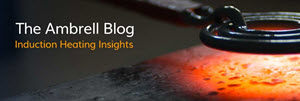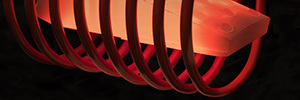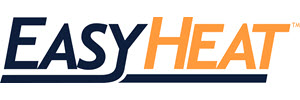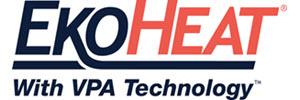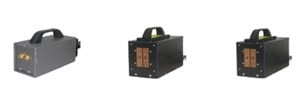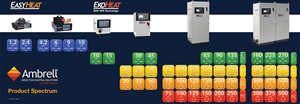Induction for Packaging
- Home
- Process Applications
- Packaging
How is Induction Used in Packaging ?
The electromagnetic field generated by the induction sealing system heats the conductive material used in the bond formulation.
Induction generates an electromagnetic field in a work coil that induces currents in the conductive material of the bonding material placed within or near the coil. Friction from these currents elevates the temperature of the workpieces and filler to be brazed.
Benefits of packaging with induction
-
Meets tight production tolerances with precise localized heat to small areas creating pinpoint accuracy
-
Increases production rates with faster heating cycles
-
Reduces defect rates with repeatable, reliable heat
-
Eliminates variability from operator-to-operator, shift-to-shift
-
Maintains metallurgical characteristics of the individual metals
packaging Application Notes
Select from our collection of packaging notes, taken from years supporting our customers. Read how we helped to solve their process heating challenges.
 Heating Steel Knives; Food Processing
Heating Steel Knives; Food Processing
To rapidly heat steel knives on the line of a food processing facility, improving efficiency; the client had been using a different heating method.
 Soldering a steel canister for sealing
Soldering a steel canister for sealing
Current hand-soldering process results in uneven, non-uniform joints and requires long production times. Induction delivers uniform, quality joints by generating heat within the end-plate and reservoir walls.
 De-bonding a Magnetic Steel Paint Can Lid
De-bonding a Magnetic Steel Paint Can Lid
The goal of the induction bonding process is to quickly and cleanly remove the can lid and to pour out paint to reformulate. Induction enabled rapid removal of the paint can lids.
 Curing Oil Filters for Agricultural Equipment
Curing Oil Filters for Agricultural Equipment
To heat steel parts for a curing application; the end-product was an oil filter for agricultural equipment.
 Heat aluminum molds to release baked food products
Heat aluminum molds to release baked food products
Induction heating is safer than heating with a convection oven. Grease from the molds causes a fire hazard and waste gases in the oven.
 Sealing an Aluminum Cap Seal on a Plastic Jug
Sealing an Aluminum Cap Seal on a Plastic Jug
To heat one aluminum cap seal on a plastic jug for a cap sealing application. The client is replacing past systems that no longer work for their process.
 Bonding Foil to a Plastic Bottle
Bonding Foil to a Plastic Bottle
It was confirmed that the aluminum heated sufficiently to create a bond between the foil and the bottle, meeting the client’s objective.
 Sealing Aluminum Caps (Beverages)
Sealing Aluminum Caps (Beverages)
Induction delivers the same result time after time, making it ideal for this high-volume manufacturing process. The space-efficient 45 kW EKOHEAT fits nicely into the client's floor plan.
 Bonding plastic sleeve to stainless steel handle for food industry
Bonding plastic sleeve to stainless steel handle for food industry
Induction heating provides highly accurate, fast, more efficient placement of heat, no effect to surrounding components
 Curing ink on aluminum bottle caps
Curing ink on aluminum bottle caps
A double channel coil is used for the ink drying application. Fifteen bottle caps are placed inside the coil and power is applied for 3 seconds to dry the ink.
An EASYHEAT and a workhead required a minimal footprint, saving the client floor space.
 Sealing an aluminum disk onto a plastic cap
Sealing an aluminum disk onto a plastic cap
Induction heating enabled the aluminum to seal to the plastic cap quickly without the cap being damaged. The customer desired a quick rate which would make in-sourcing the process worthwhile, and induction heating exceeded the targeted production rate thanks to its fast heating.
 Metal to plastic bonding of beer kegs
Metal to plastic bonding of beer kegs
A single-turn solenoid coil is placed around the assembled beer keg and heated for 35 seconds as the keg is rotated. Pressure is applied with a press on the top rim whilst the keg is rotating, forming a seal between the aluminium mesh and the two halves of the beer keg.
 Heating pre-assembled plastic tube and cap for cap sealing application
Heating pre-assembled plastic tube and cap for cap sealing application
Customer currently has Ambrell equipment and would like to increase their run rate.
 Sealing aluminum foil cap to plastic bottle
Sealing aluminum foil cap to plastic bottle
Coil design can be incorporated to fit a wide range of production setups. Hands-free heating, involves no operator skill for manufacturing and directly heats only perimeter of foil.
 Curing the Inside Liner of Baby Food Bottle Tops
Curing the Inside Liner of Baby Food Bottle Tops
A three turn oval pancake coil is used to cure the inside liner of a baby food bottle cap. The bottle cap travels through the coil at 25 per second to cure 500 caps per minute.
 Cap Sealing 3.5 Lotion Container
Cap Sealing 3.5 Lotion Container
Power is applied directly to the foil; no energy is wasted heating the cap or the surrounding air or parts.
 Cap Sealing; Shampoo Container
Cap Sealing; Shampoo Container
A three-turn two-position helical coil is used to heat the aluminum foil in a tunnel style assembly. Product (containers) passes easily under the induction coil.
The Ambrell 20kW output solid state induction power supply along with a unique 30 inch long multi turn helical coil was found to produce the following results.
From our blog
More packaging Resources
AMBRELL CORPORATION
1655 Lyell Avenue
Rochester, NY 14606
United States
F: +1 585 889 4030
AMBRELL B.V.
Holtersweg 1
7556 BS Hengelo
The Netherlands
AMBRELL Ltd.
Unit 6, Space Business Centre
Tewkesbury Road
Cheltenham, GLOS, GL51 9FL
United Kingdom
F: +31 546 788 154


 Sealing a Plastic Container
Sealing a Plastic Container Curing Measuring Tape Paint
Curing Measuring Tape Paint